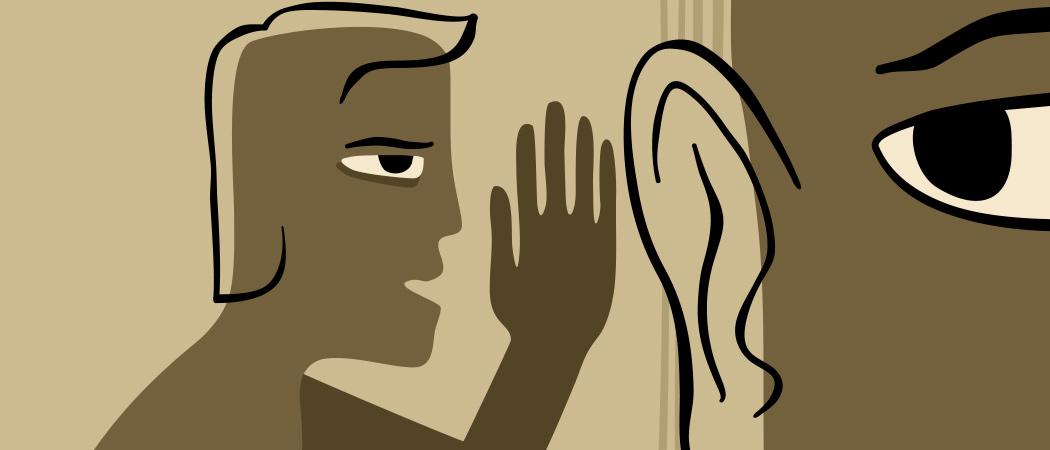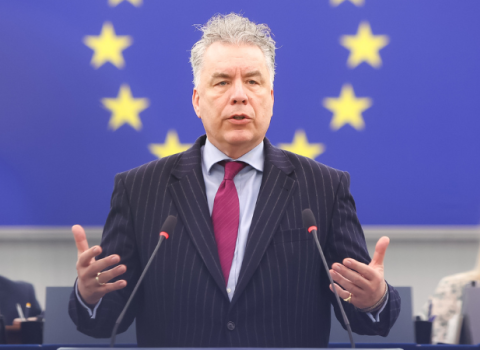EU TRESCA-ReTHINK event explores how science communicators can counteract misinformation

In an age of fake news, it has become essential for science to connect with public audiences in a relational, honest and transparent manner. That was one of the themes of a recent online conference co-hosted by the EU’s Trustworthy, Reliable and Engaging Scientific Communication Approaches (TRESCA) project and the ReTHINK project. At the event, experts discussed how to improve science communication to address unintentional misinformation and deliberate disinformation.
“We need to mitigate the spread of fake news, especially now regarding Ukraine,” stressed Alexandra Hebda, policy officer with DG Research and Innovation in the European Commission. “Commission action is much more responsive” in the wake of this situation and the pandemic, she said.
But Hebda warned the “publish or perish culture” in the research community needs to change in favour of quality over quantity. “We need solid methodology and reproducibility as opposed to more papers.” At the same time, researchers’ careers should not just be based on their number of publications, but also how they communicate their research. Hebda supports “diamond open access publishing,” online platforms that allow different disciplines to publish and access scientific papers without fees.
Coordinated by Erasmus University Rotterdam and funded by the EU’s Horizon 2020 Research and Innovation Programme, the TRESCA project seeks to increase societal trust in research.
“Research questions and approaches get closer to societal needs and values with the input of societal actors,” noted Michael Arentoft, deputy head of the Open Science Unit, DG Research and Innovation at the European Commission. “We also get more and better data, more angles, quicker update of results, behavioural changes and improved trust.”
He also cautioned that science is not 100% accurate, which must be accounted for in communication, along with inclusivity in societal engagement: “Science should be a point of connection, instead of polarisation.”
Forging connections with new audiences
TRESCA has just launched a Massive Open Online Course (MOOC) [AD1] for scientists, journalists and policymakers to sharpen their skills in providing reliable and trustworthy science communication. It addresses the digitalization of public communication; mis-, dis- and mal-information; what drives public trust; how to combat the threat of fake news and connect with citizens; and improving policymaking and communication practices.
A ReTHINK survey of 500 science communicators across Europe revealed that 98.5% of them seek to reach those already interested in science. That’s a mistake, according to Andy Ridgway, senior lecturer in science communication at the University of West of England. “Digital communication makes it easier to reach people, but more difficult to connect,” he added.
Ridgway’s own interviews with 80 citizens across the EU about the COVID-19 pandemic revealed that pre-existing beliefs largely shaped how they made sense of science. The influence of relatives, broadcast media and their personal values are also important.
Vanessa Mignan Jenkins, an independent consultant in France who works with marginalised communities, pinpointed three pitfalls facing science communicators trying to reach these communities: the false narrative that science is not a priority for them; comfortable charity, as in “let’s be nice to poor people;” and the illusion of neutrality that “I don’t see colour.”
“Maintaining the status quo is not being neutral,” she noted. “We must recognise citizens as collaborators, not charity cases and stop acting as gatekeepers.” Instead, empower and defer to those underrepresented, she implored.
Sara Degli Esposti of the Spanish National Research Council added that science communicators must be careful that psychological biases don’t delegitimise under-represented groups, such as young women. At the same time, she stressed the need to qualify sources of information. “The digital world makes it easy to fake expertise,” Esposti espoused. “We need peer-reviewed papers and experts we can trust. We must rebuild an Ivory Tower that’s more inclusive.”
Another serious issue is news media spreading misinformation for the sake of ratings. This “crisis” is due to digital ads and click bait headlines that capture attention, but have little to do with content. “The funding of news media today fuels this,” noted Esposti. “Ads used to fund quality, but now there is too much competition. People need to start paying for quality.”
Some speakers suggested EU funding should be available to reach those who are not typically heard. “It’s about mindset and money,” said Annette Leßmöllmann of Germany’s Karlsruhe Institute for Technology. “Invest time to analyse your audiences and understand why they feel disconnected. Culture and language, for example, are influences before science even factors in.”
Leßmöllmann also recommended actively and transparently communicating with target audiences (not just putting documents online) and to “stop preaching to the choir” and target new audiences. “Don’t talk about them, talk with them,” she said. Leßmöllmann added “the younger, the better” in reaching out to people to build up their trust in scientific institutions over time.
Noting that the pandemic reminded people how important science is, Deborah Blum, director of the Knight Science Journalism Program at the Massachusetts Institute of Technology, pointed out that “millions of people got mRNA vaccines, which shows their trust in science and awareness of what it can do it our favour.”
#LegitScience in Social Media
Still, the pandemic also saw fake news and conspiracy theories spread rapidly on social media with deleterious impacts to both individuals and society. Another panel during the TRESCA-ReTHINK conference explored how to counter these risks and effectively communicate science in social media.
Conspiracy theorists, who connect events or practices to evil causes or villains, often use good science to support bad theories, noted Jing Zeng, science research associate at the University of Zurich. She frowned upon papers published before peer-review because they can be misused by such theorists. She also challenged scientists to explain research simply and as definitively as possible. “Verified content is based on quantity, not quality, and amateurs are often more relatable,” Jing noted. “Institutions should take on board amateur collaborators to get informed and improve communications. Authentic, down-to-earth content can result.”
Lizzy Steib, head of research and text of Kurzgesagt, a German video story-telling producer, emphasised the need to double fact-check, work with scientific experts, push deadlines to get facts right and be transparent about sources.
Maximilian von Perfall, strategic partnerships manager at YouTube in Munich, added that
conspiracy theories have long been aired on YouTube, but the COVID-19 pandemic boosted them, making the company’s community guidelines increasingly important. “We must update these guidelines based on fast-evolving conspiracy theories. It is best to catch bad actors before they go viral,” he explained. To this end, YouTube removes content that violates these guidelines or the law. In 2019 alone, it removed about 14 million videos.
Reducing the spread of borderline content by minimising its presence online also helps prevent mis- and disinformation, Von Perfall added. YouTube rewards trusted sources by helping them be successful and sharing advertising revenue, he said, explaining that “watch time” is a more decisive factor than the number of viewers in revenue-sharing as advertisers wish to be paired with good content.




 A unique international forum for public research organisations and companies to connect their external engagement with strategic interests around their R&D system.
A unique international forum for public research organisations and companies to connect their external engagement with strategic interests around their R&D system.